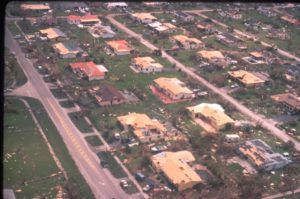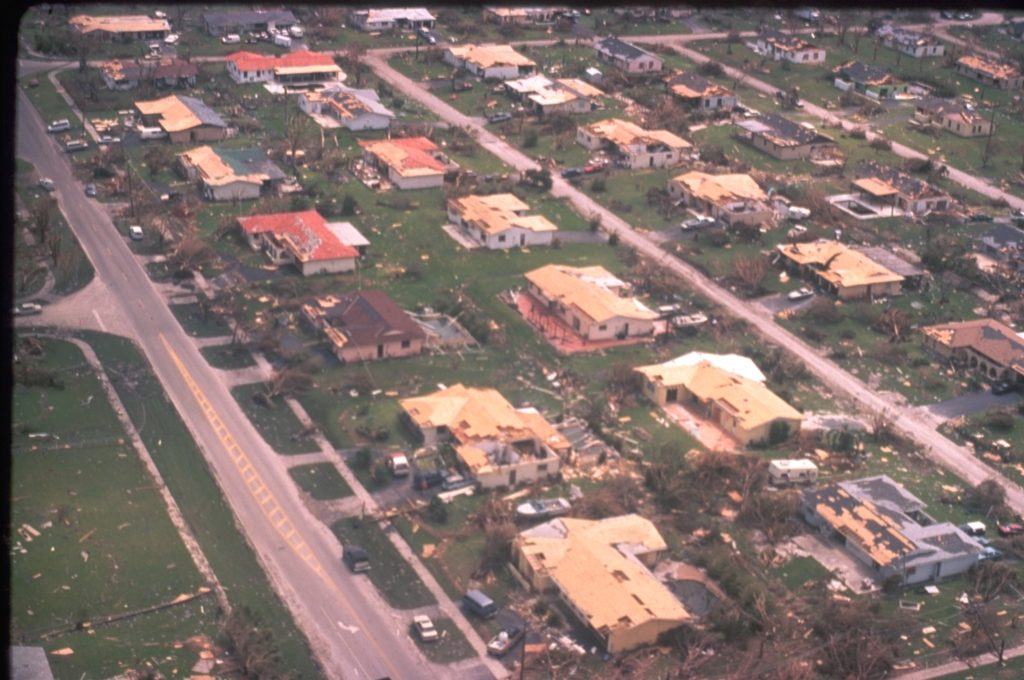When Andrew, a category 5 hurricane, made landfall on August 24, 1992, it was a wakeup call for the insurance industry. The devastation that resulted became the impetus for the widespread adoption of catastrophe models, according to Karen Clark, co-founder of Karen Clark & Company.
Though Clark developed catastrophe modeling more than five years before Andrew, much of the industry did not use the model.
“AIR did have about 30 clients at the time,” said Clark, founder of AIR Worldwide and creator of the first catastrophe model.
According to Clark, the models themselves haven’t changed fundamentally.
“The structure of the models, the way they work with their different components and the output they produce, that really hasn’t changed. That has stayed the same,” said Clark. “Since pre Andrew to today, the catastrophe modeling approach is the same. The fundamental model structure is the same.”
Prior to using the models, insurers typically managed their book based on premium and didn’t send any exposure data to reinsurers.

“Immediately after Andrew, reinsurers started demanding from primary insurers at least county level aggregates. They had to give information on how much property value they wrote by county. Of course, it evolved to five digit zip codes. Starting in the 2000s, at least insurers in the U.S., are able to provide their property data at geocode resolution,” Clark said.
The main difference now, she said, is the quality of the exposure data.
“I’d say the most fundamental change is the quality of the exposure data that’s being provided to the models and of course the models themselves,” said Clark. “We’ve had several events…over the past 25 years, so that’s provided more claims and loss data to be able to fine tune what’s called the damage functions in the model. There hasn’t been any fundamental change in modeling, but the models have been enhanced and the exposure data that insurers put in has been enhanced.”
According to Clark if a second Hurricane Andrew happened today, insured losses would be in the range of $50 billion.
“Why it’s $50 billion versus $15 is basically just the increases in the property values. In the Homestead area, population has doubled since Andrew. The cost of construction has more than doubled,” Clark explained. “When you put all these factors together…The counterbalancing factors are that building codes have improved, but even after you factor that in, a $15 billion loss in 1992 would be about $50 billion today.”
While most companies could handle that, there are some smaller insurers with concentrated books of business that could be financially impaired as a result of a second, similar hurricane, said Clark.
If a similar hurricane hit 20 miles north and made landfall in Miami, the devastation would be considerably higher.
“However, if you take Andrew and you move it 20 miles north so that it makes landfall in the most populated area of downtown Miami, the loss is likely to be greater than $200 billion. Now you have a totally different situation,” Clark said.
That kind of loss could be devastating to the insurance industry.
While she doesn’t expect the structure of models used today to change, Clark sees open models being used more and more in the future.
“The traditional models, they’re essentially black boxes. You just put in your exposure, and you get your losses. You can’t interact with the model assumptions,” said Clark. “We believe the way to make the models better in the future is to make them open, so that the users can really learn a lot more about the assumptions, about the components. Not only that but insurers can customize the model assumptions to be more reflective of their actual claims experience.”
Was this article valuable?
Here are more articles you may enjoy.


 Spain and Portugal Hit With Worst European Blackout in Years
Spain and Portugal Hit With Worst European Blackout in Years  US Officials Mull Easing Tariffs Targeting the Auto Industry
US Officials Mull Easing Tariffs Targeting the Auto Industry  Auto Lobbying Groups Unite to Pressure Trump for Tariff Relief
Auto Lobbying Groups Unite to Pressure Trump for Tariff Relief  Forecast Calls for Wildfires to Burn More Land Across U.S. This Year
Forecast Calls for Wildfires to Burn More Land Across U.S. This Year 